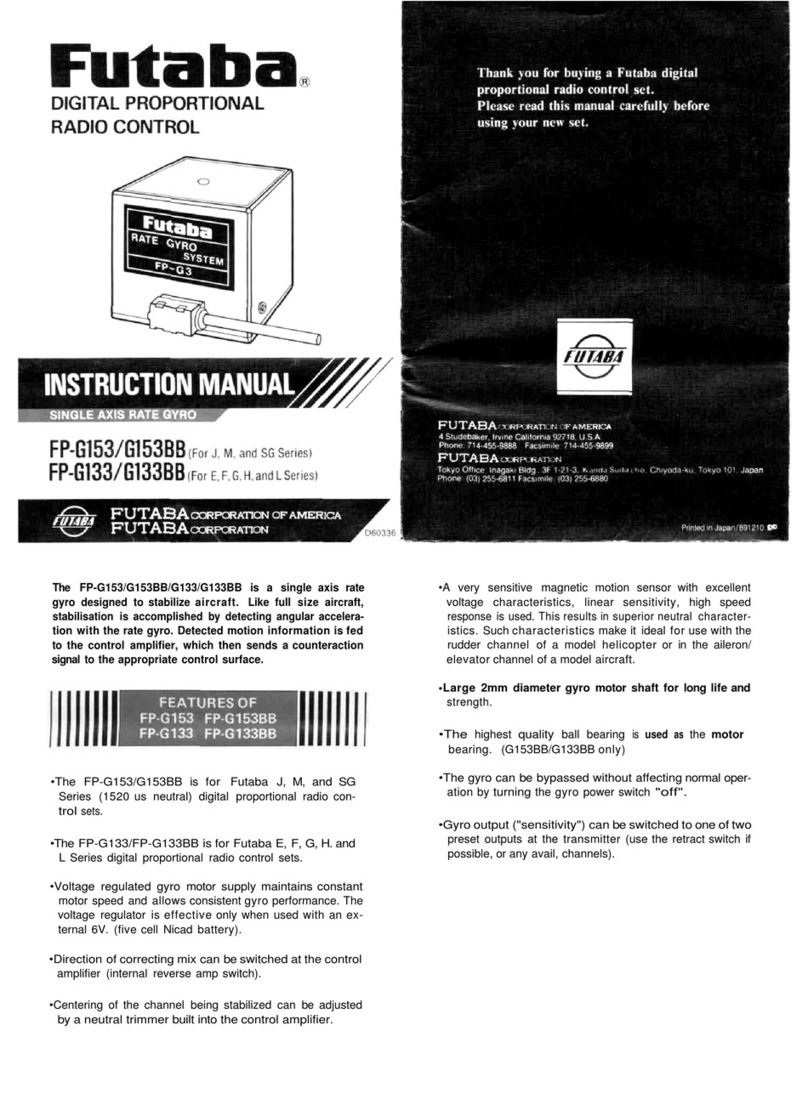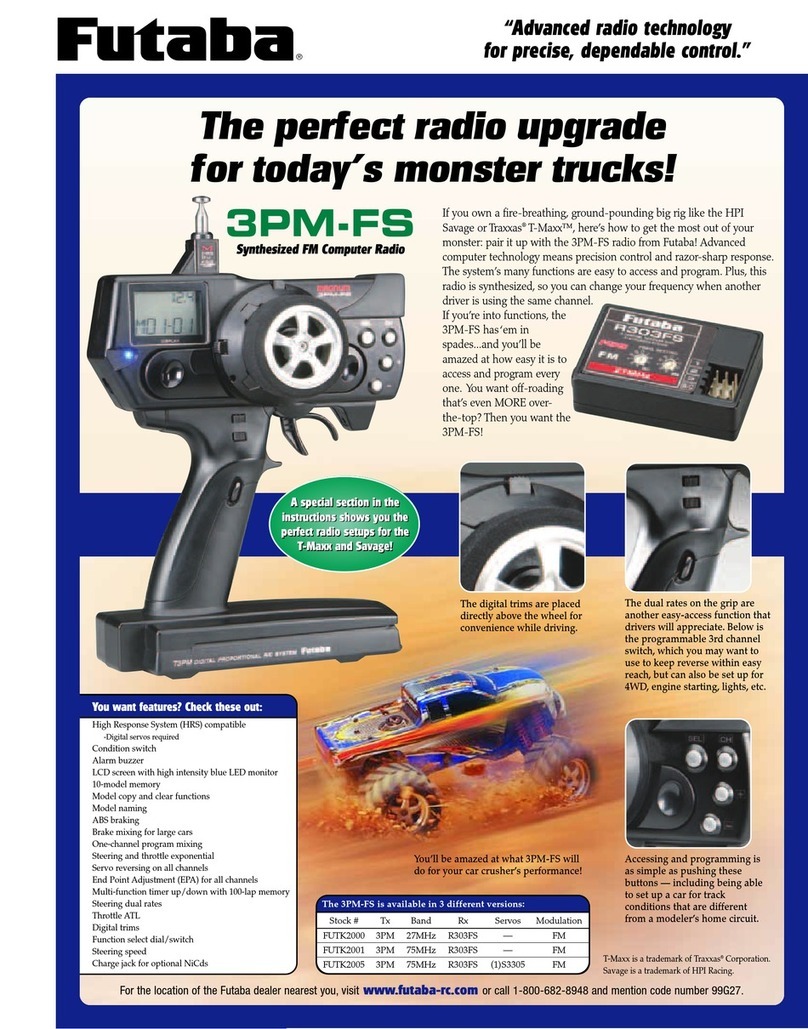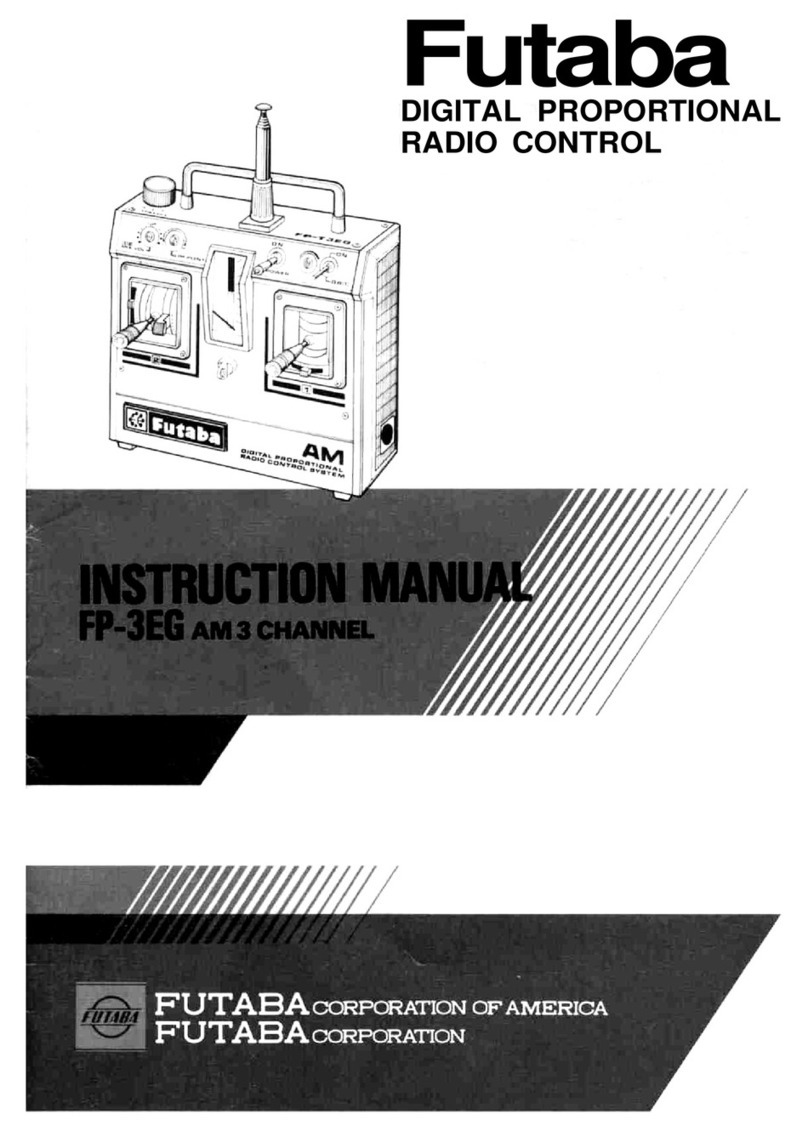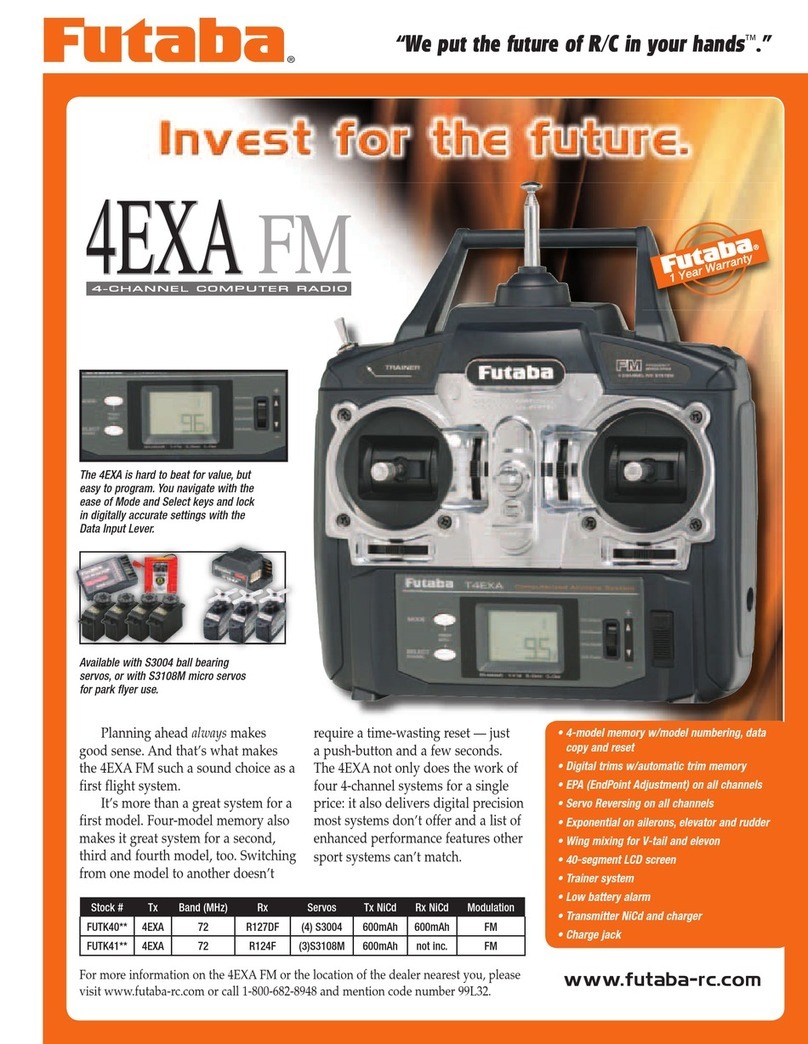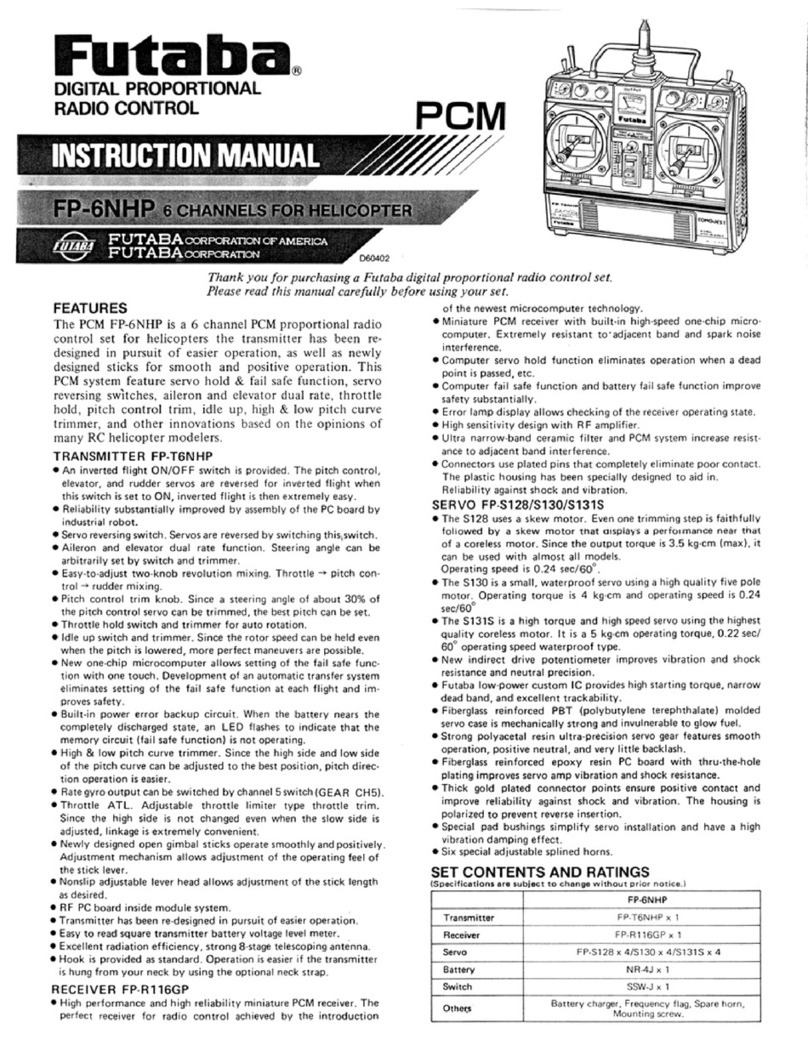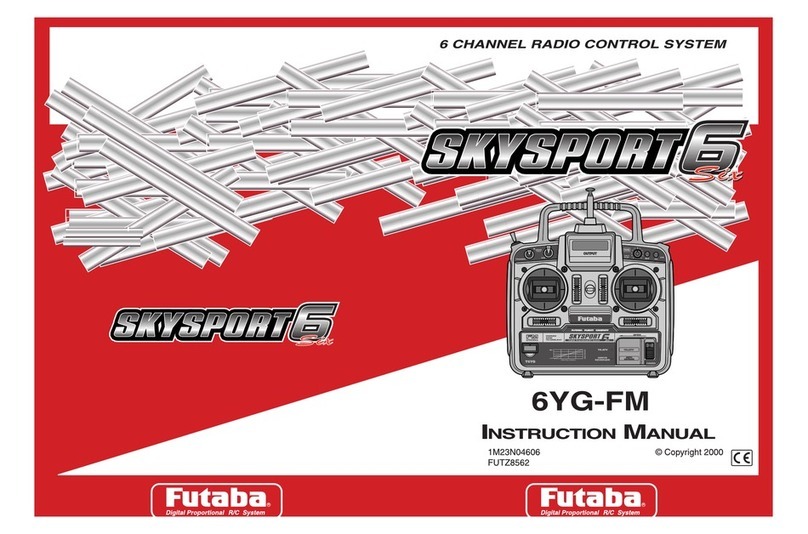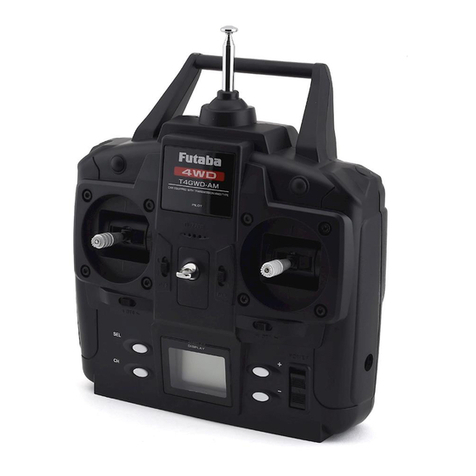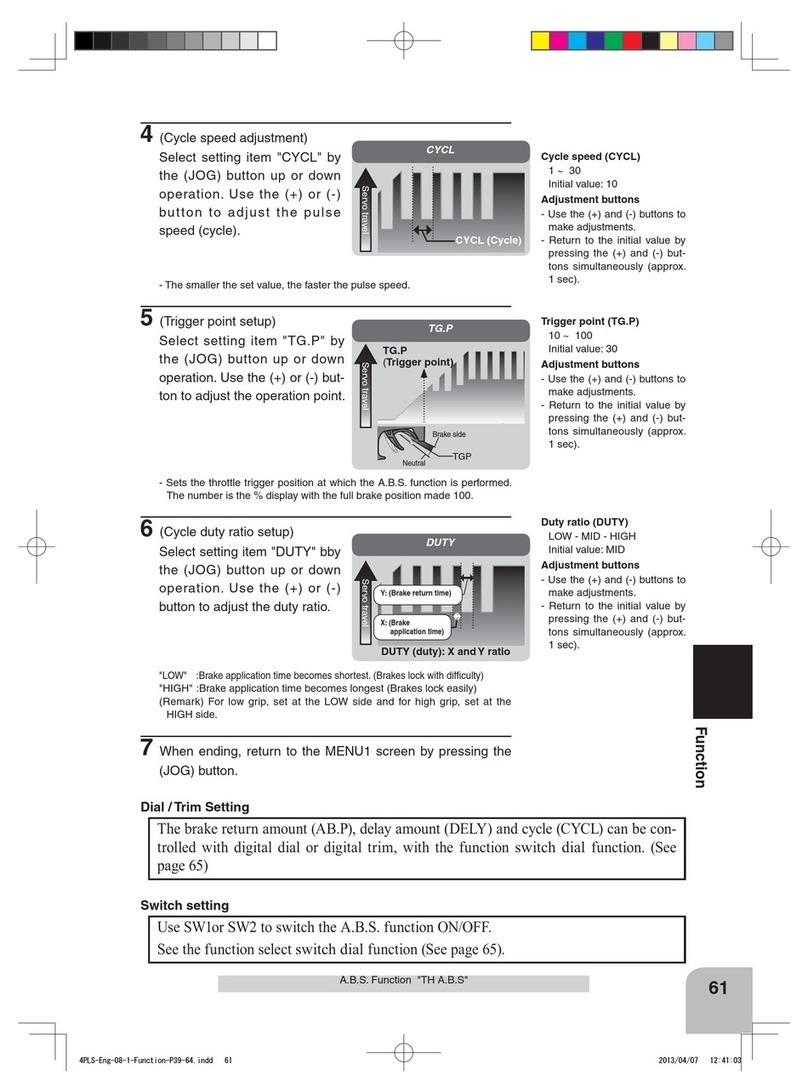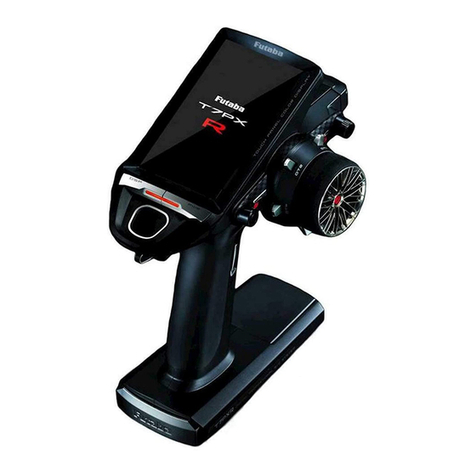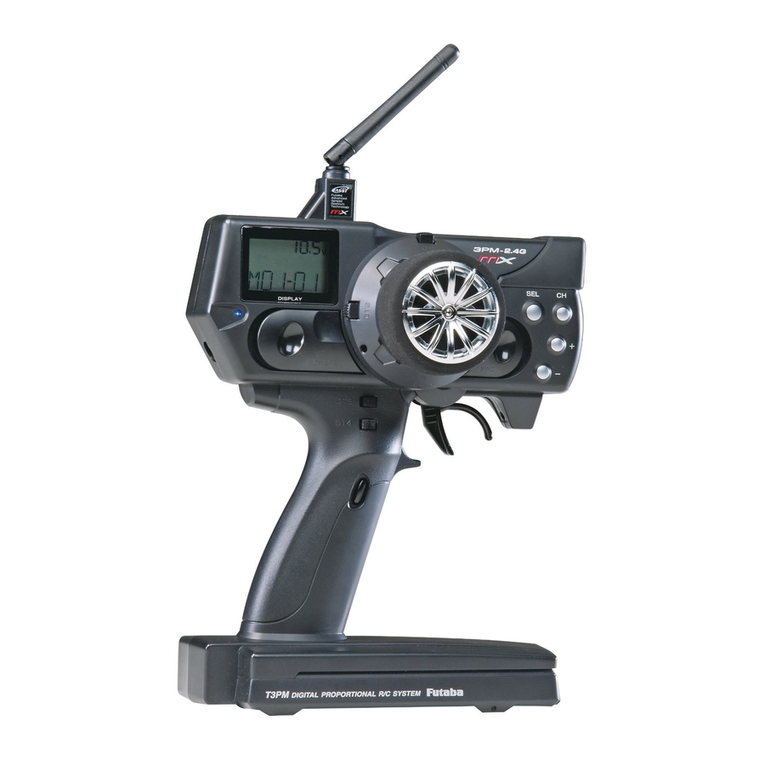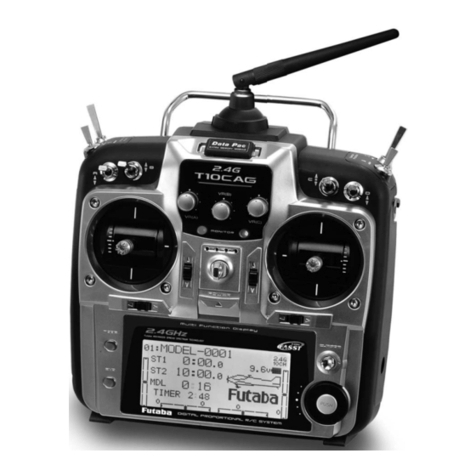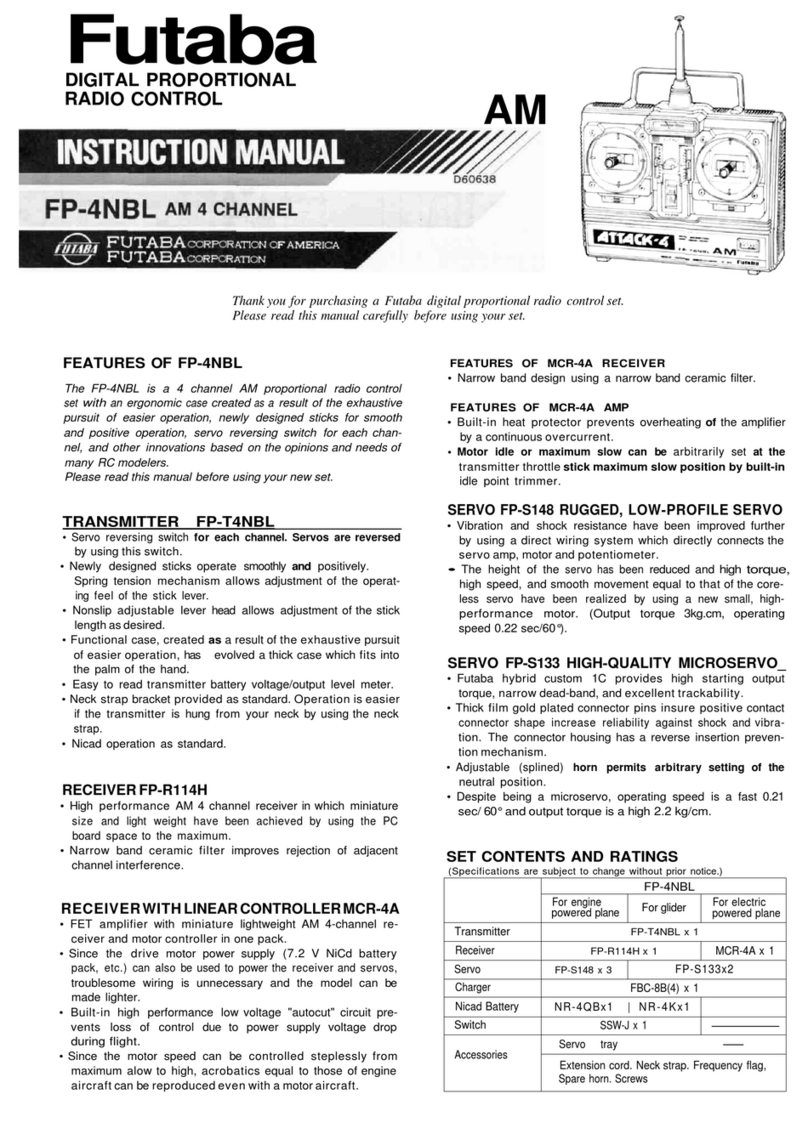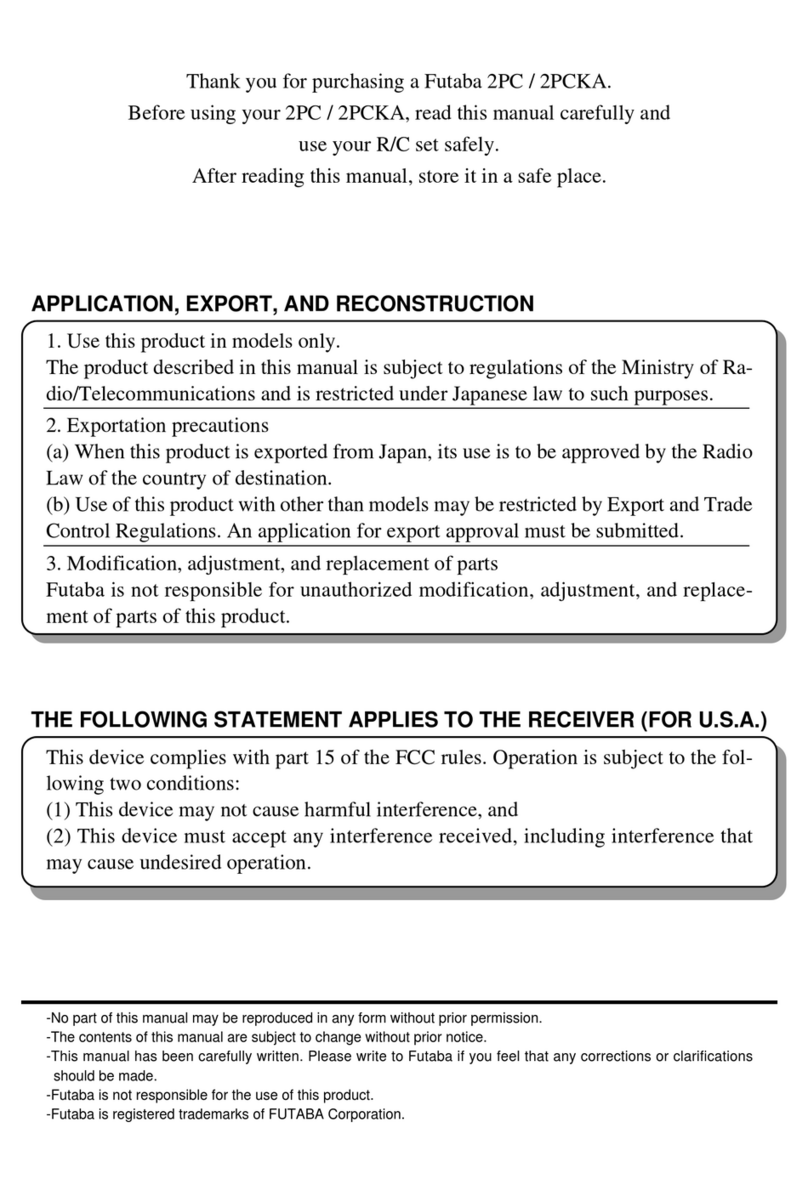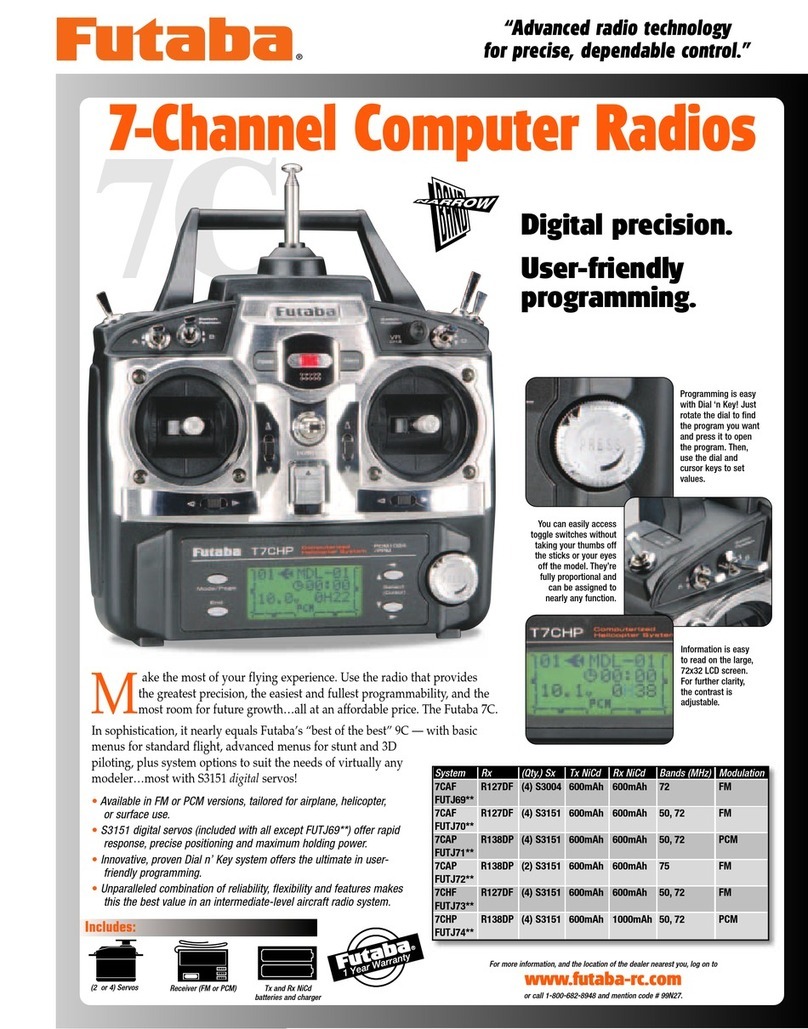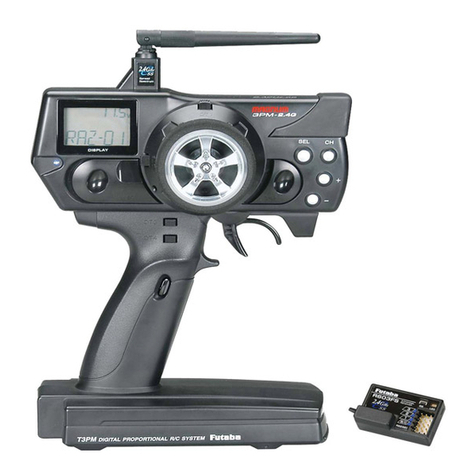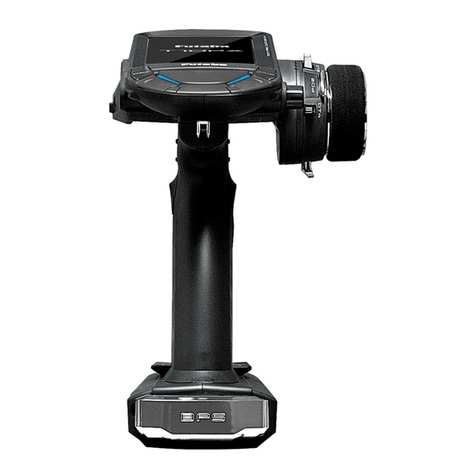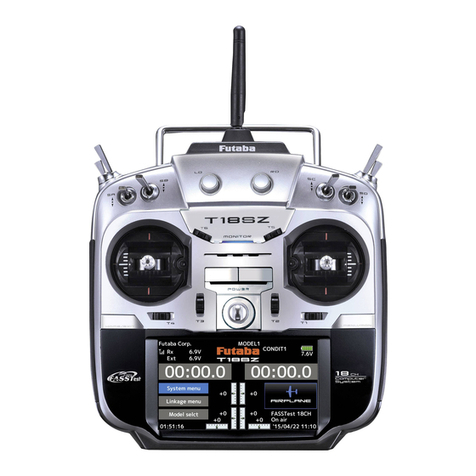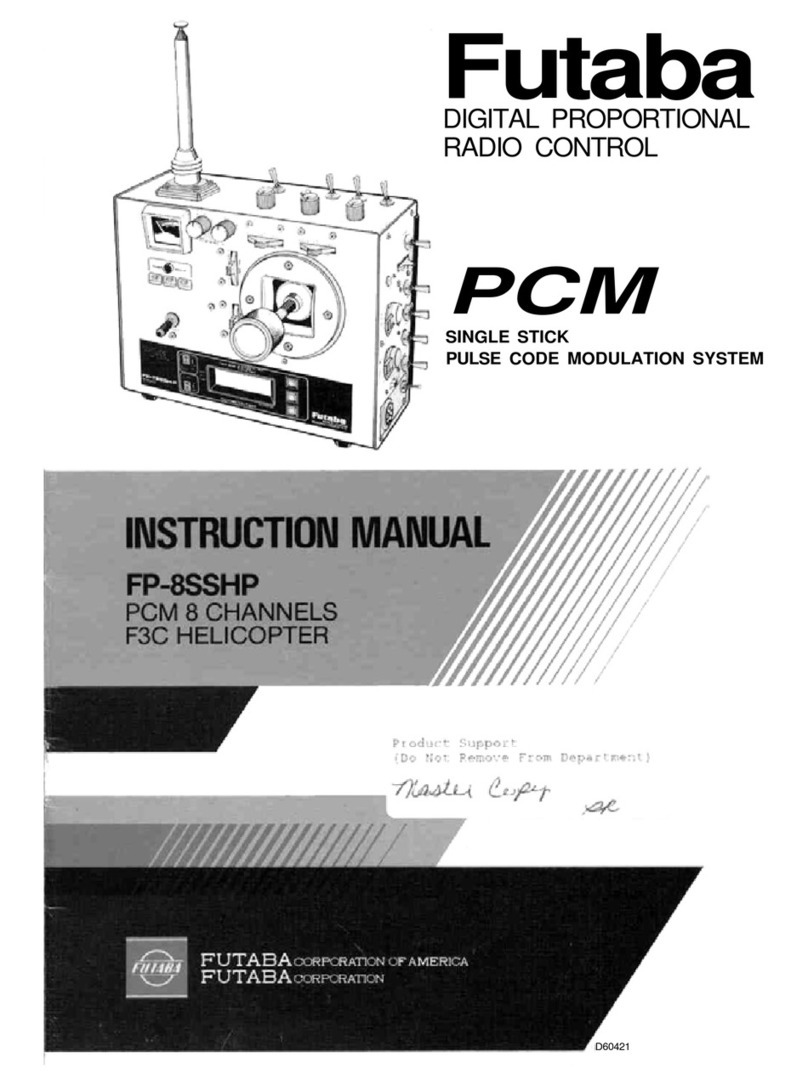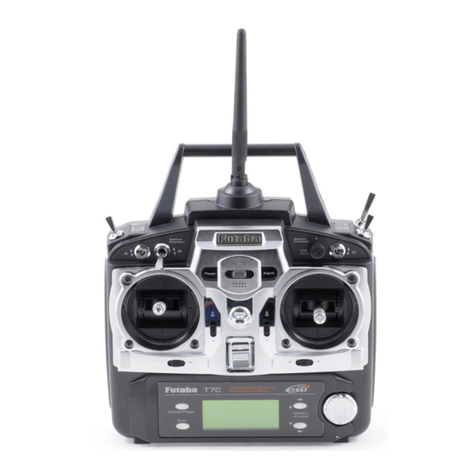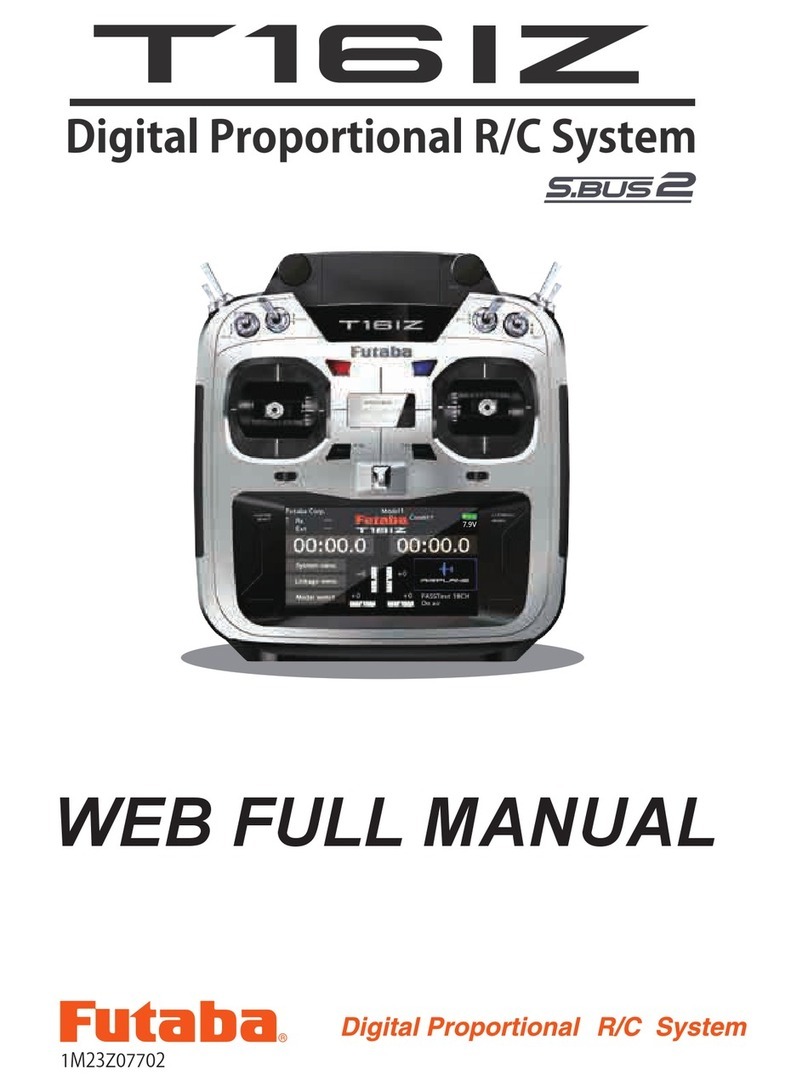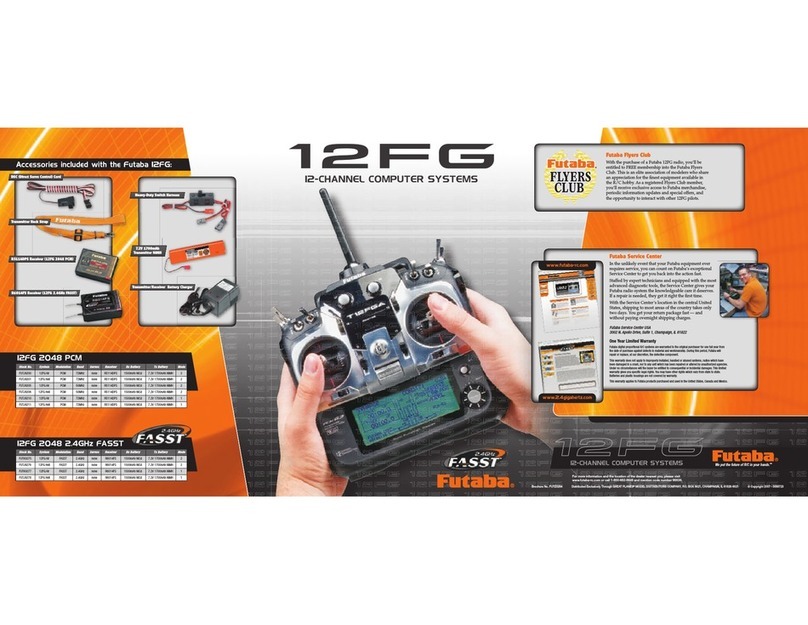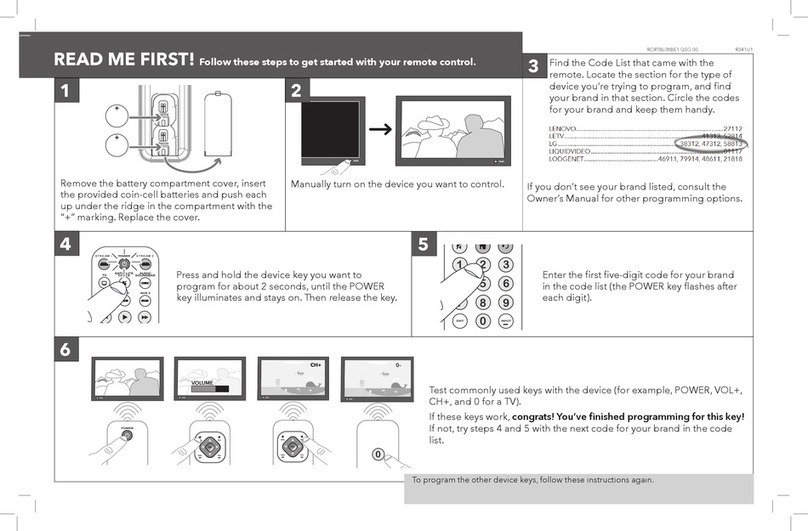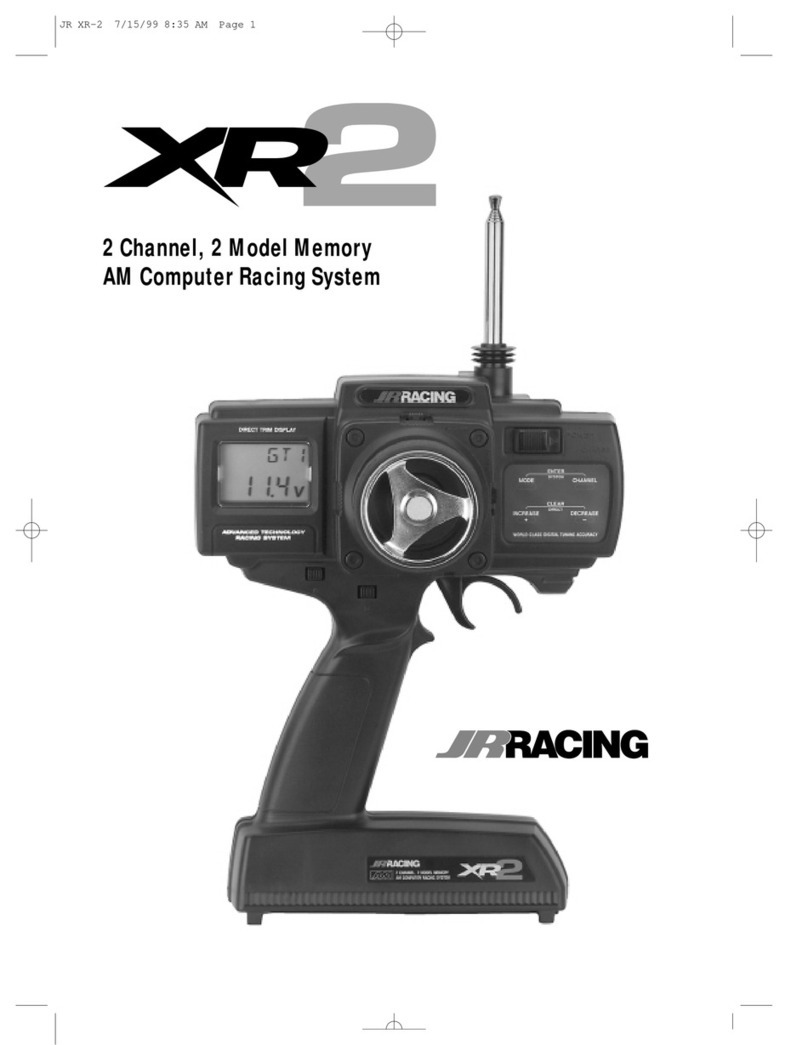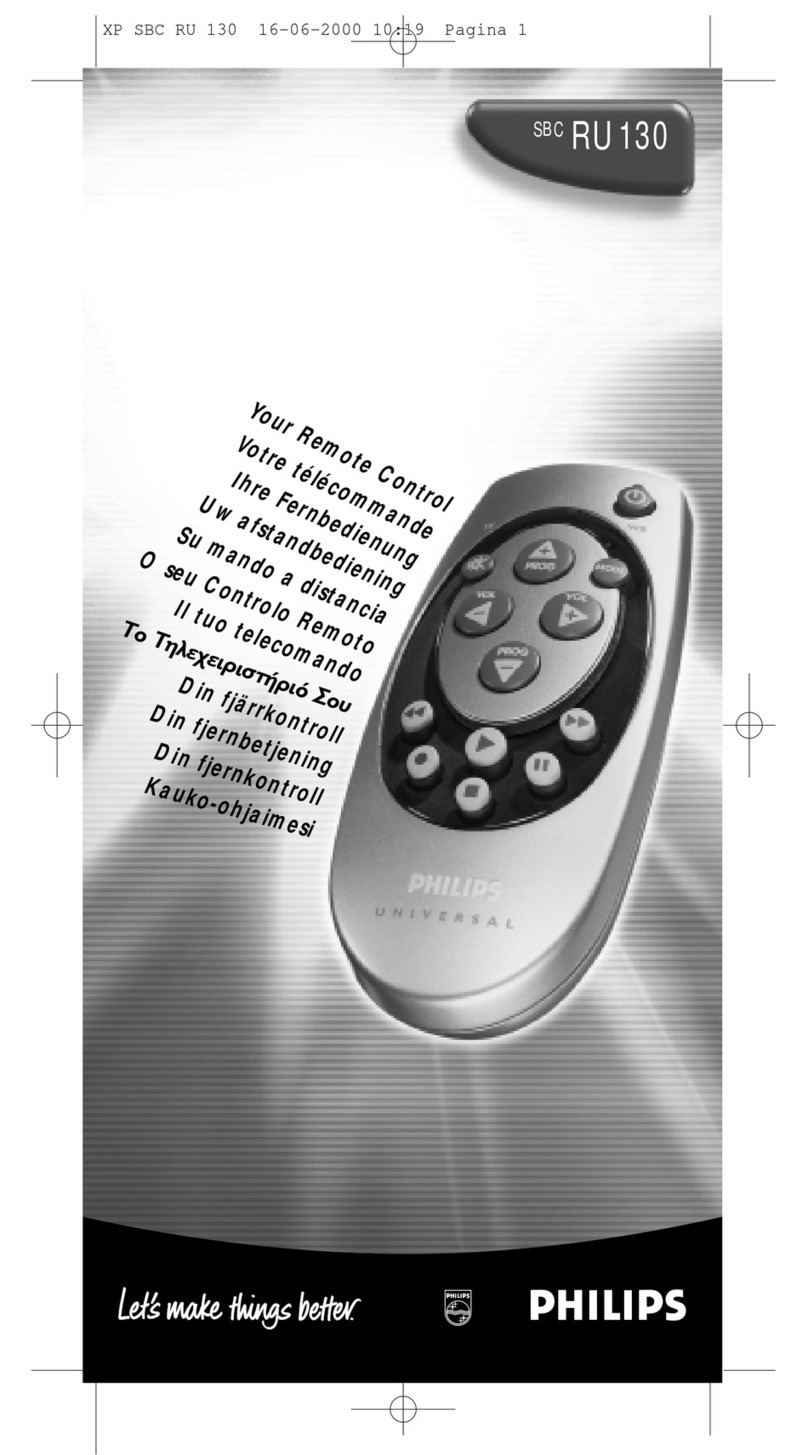
10
For Your Safety As Well As That Of Others
Storage and Disposal Precautions
Warning
Prohibited Procedures
Do not leave the radio system or
models within the reach of small chil-
dren.
A small child may accidentally operate the system,
this could cause a dangerous situation and injuries.
Nicad batteries can be very dangerous when mis-
handled and cause chemical damage.
Do not throw Nicad batteries into a
fire. Do not expose Nicad batteries to
extreme heat. Also do not disas-
semble or modify a Nicad battery
pack.
Overheating and breakage will cause the electrolyte
to leak from the cells and cause skin burns, loss of
sight as well as other injuries.
Mandatory Procedures
When the system will not be used for
any length of time store the system
with batteries in a discharged state.
Be sure to recharge the batteries prior
to the next time the system is used.
If the batteries are repeatedly recharged in a slightly
discharged state the memory effect of the nicad bat-
tery may considerably reduce the capacity . A reduc-
tion in operating time will occur even when the batter-
ies are charged for the recommended time.
<Nicad Battery Electrolyte>
The electrolyte in Nicad batteries is a strong alkali. Should you get even the
smallest amount of the electrolyte in your eyes, DO NOT RUB, wash immedi-
ately with water, seek medical attention at once. The electrolyte can cause blind-
ness. If electrolyte comes in contact with your skin or clothes, wash with water
immediately.
Caution
Prohibited Procedures
Do not store your R/C system in the
following places.
- Where it is extremely hot or cold.
- Where the system will be exposed to direct
sunlight.
- Where the humidity is high.
-Where vibration is prevalent.
-Where dust is prevalent.
-Where the system would be exposed to
steam and condensation.
Storing your R/C system under adverse conditions
could cause deformation and numerous problems
with opreation.
Mandatory Procedure
If the system will not be used for a
long period of time remove the batter-
ies from the transmitter and model
and store in a cool dry place.
If the batteries are left in the transmitter electrolyte
may leak and damage the transmitter. This applies to
the model also, remove the batteries from it also to
prevent damage.
<Nicad Battery Recycling>
A used Nicad battery is valuable resource. Insulate the battery terminals and
dispose the battery by taking it to a battery recycling center.
